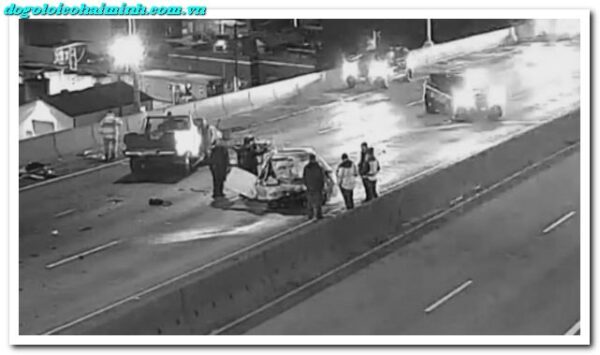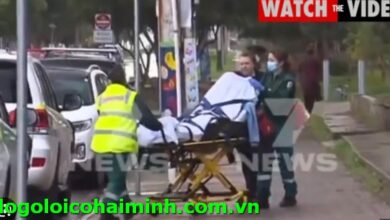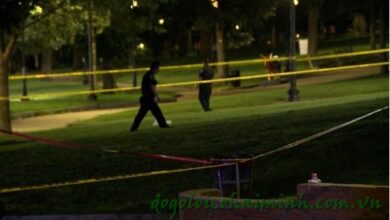West Seattle Bridge Accident and its Impact on Traffic Flow

The West Seattle Bridge Accident is not just an engineering marvel; it’s a vital lifeline connecting various parts of the city. Serving thousands of vehicles daily, this essential route has been the subject of much debate, especially concerning its safety and impact on the city’s overall traffic flow. However, the recent fatal accident on this bridge has not only shaken the local community but has also put a spotlight on the broader implications for Seattle’s transportation network. This incident compels us to re-examine the adequacy of existing safety measures, the efficiency of our emergency response systems, and the readiness of alternate routes to handle sudden surges in traffic. In partnership with dogoloicohaiminh.com.vn, we delve into the various aspects of the accident and its cascading effects on the city’s traffic.

I. West Seattle Bridge Accident and its Impact on Traffic Flow
1. Brief Overview of the West Seattle Bridge and its Significance in Seattle’s Traffic Network
The West Seattle Bridge, spanning over the Duwamish Waterway, stands as a vital artery in Seattle’s intricate traffic web. Serving as a primary connection between West Seattle neighborhoods and the city’s central areas, this high-rise structure witnesses a daily surge of commuters, making it indispensable to the seamless flow of people and goods in the city. As a transportation hub, it not only supports vehicular traffic but also provides routes for cyclists and pedestrians, enhancing the overall connectivity of Seattle. The bridge’s strategic position and functionality underscore its importance; any disruption to its operations can lead to widespread implications on the city’s transit system, demonstrating its pivotal role in ensuring smooth traffic in Seattle.
2. Summary of the Recent Accident that Took Place on the Bridge
On a somber day in March, the West Seattle Bridge became the site of a tragic mishap. Delfino Lopez-Morales, aged 36, suspectedly drove in the wrong direction, resulting in a catastrophic collision. This devastating accident claimed the young lives of Riley Danard and Khalea Thoeuk, both just 18 years old. Moreover, Lopez-Morales was later charged with two counts of vehicular homicide and one count of reckless driving. The incident not only shook the local community with the sudden loss of life but also led to significant disruptions in traffic flow, highlighting the vulnerabilities in the traffic system and raising questions on road safety measures on the bridge.
II. Suspected driver in deadly wrong-way crash on West Seattle Bridge charged
III. Details of the Accident
1. Timeline of Events Leading Up to, During, and Immediately After the Accident
- Pre-Accident: On the fateful morning of the accident, the flow of traffic was relatively standard for a weekday. Weather conditions were clear, providing no indication of the tragedy that was to unfold.
- During the Accident: At approximately 7:46 AM, Delfino Lopez-Morales, reportedly driving at high speed, entered the West Seattle Bridge in the wrong direction. Within moments, a catastrophic collision occurred involving Lopez-Morales’ vehicle and another car carrying Riley Danard and Khalea Thoeuk, both 18 years old.
- Immediate Aftermath: The crash led to an immediate halt of traffic on the bridge. Police and fire rescue teams were dispatched and arrived at the scene promptly. Traffic was rerouted, causing congestion on alternate routes, while the bridge remained closed for several hours for investigation and clearing debris.
2. Parties Involved and Casualties
- Delfino Lopez-Morales: A 36-year-old man suspected of driving the wrong way, subsequently charged with two counts of vehicular homicide and reckless driving.
- Riley Danard and Khalea Thoeuk: Both 18-year-old victims who were fatally injured in the accident. They were in the car that Lopez-Morales collided with.
- Other Commuters: Thankfully, no other vehicles were directly involved in the accident, but the incident caused hours of delays for thousands of commuters.
3. Immediate Response from Emergency Services
- Fire Department: Seattle’s Fire Department was quick to arrive at the scene. They had to use hydraulic tools to extricate one man trapped in his car. Both young victims were declared deceased at the scene.
- Police: The Seattle Police immediately closed off the bridge for investigation and to allow emergency services to work unimpeded. They later charged Delfino Lopez-Morales with vehicular homicide and reckless driving.
- Medical Teams: Ambulances were dispatched, but unfortunately, Danard and Thoeuk couldn’t be saved. Lopez-Morales was transported to a local hospital for evaluation and treatment.
- Traffic Management: Seattle’s Department of Transportation acted promptly to provide alternate routes and manage the overflow of traffic resulting from the closure of the bridge.
The tragedy has not only highlighted the need for stringent safety measures but also brought attention to how vital coordinated emergency services are in the moments following such disastrous events.
IV. Immediate Effects on Traffic Flow
1. Descriptions of Traffic Jams or Slowdowns Directly Resulting from the Accident
The accident on the West Seattle Bridge had an immediate and severe impact on the area’s traffic flow. The bridge was promptly closed for investigation and emergency services, leaving drivers with no choice but to find alternate routes. As a result, traffic was backed up for miles, with some areas experiencing gridlock conditions. Commuters were stuck in their vehicles for hours, contributing to a cascade of delays across multiple road networks in Seattle. The ripple effect of the closure was felt not just on the bridge itself but also on the feeder roads leading to and from it. Traffic was snarled until late in the evening, even after the bridge was reopened.
2. Alternate Routes That Were Most Affected by the Diverting Traffic
The closure of the West Seattle Bridge forced commuters to seek alternate routes, many of which were ill-equipped to handle the sudden surge in traffic volume. Roads like Southwest Spokane Street, 26th Avenue Southwest, and Delridge Way became congested choke points. The Avalon/Harbor/Spokane intersection, in particular, faced an unprecedented influx of cars, leading to extensive delays and increased travel times. These alternate routes not only faced vehicular traffic but also saw a significant uptick in pedestrian and cycle traffic, adding to the overall chaos.
3. Response from Traffic Management Agencies
Seattle’s Department of Transportation (SDOT) acted quickly in response to the crisis. Message boards were updated to reflect the closure, and traffic officers were deployed at key intersections to facilitate smoother flow. SDOT used social media and other communication platforms to disseminate real-time information, advising drivers to avoid the bridge and suggesting alternate routes. Despite their best efforts, the sudden nature of the accident and its severity made it a challenging situation to manage effectively. However, the incident did prompt a review of existing traffic management strategies, with SDOT acknowledging the need for contingency plans for such emergencies in the future.
V. Long-Term Implications for Traffic Flow
1. Potential Structural Damages to the Bridge and Their Effect on Future Traffic
The high-speed collision and resulting emergency response could potentially have led to structural damages on the West Seattle Bridge. Though no immediate damages were reported, engineers and inspectors were tasked with conducting a thorough review of the bridge’s integrity. Should any structural weaknesses be identified, this could lead to intermittent closures or weight restrictions on the bridge, significantly affecting future traffic. Such restrictions could force heavy vehicles like buses and trucks to find alternative routes, thereby increasing congestion on other roads and prolonging commute times for all.
2. Possible Changes in Traffic Patterns and Peak Traffic Hours Due to the Accident
The accident and its aftermath have prompted local authorities to consider altering traffic patterns and monitoring peak traffic hours closely. The severity of the incident may lead to changes such as revised speed limits, the installation of additional safety measures like guardrails or speed cameras, and possibly even changes to the timing of traffic lights to manage flow more effectively. These alterations, while aimed at improving safety, may initially cause confusion and delays as drivers adjust to the new configurations. Consequently, peak traffic hours may shift or extend, affecting the daily commute for thousands of Seattle residents.
3. Changes in Public Perception of the Bridge’s Safety and Its Impact on Commuting Choices
The fatal accident has undeniably shaken public confidence in the safety of the West Seattle Bridge. With two young lives lost and another individual charged with vehicular homicide, many are questioning whether the bridge is as safe as it should be. This change in perception could lead to a variety of impacts on commuting choices. Some people may opt for alternative routes even if they are longer, while others might switch to different modes of transportation altogether, such as public transit or cycling. Increased public demand might also expedite plans for infrastructure improvements or fast-track safety enhancements that were already under consideration.
VI. Comparisons with Past Incidents
1. Brief Overview of Past Accidents on the West Seattle Bridge
The West Seattle Bridge, an important artery in Seattle’s road network, has not been a stranger to accidents, though the scale and impact of incidents have varied. Over the years, there have been numerous fender-benders, collisions, and even a few more serious incidents that resulted in injuries and temporary bridge closures. While most of these accidents were resolved quickly with minimal disruption, they have drawn attention to the bridge’s role in the city’s overall traffic safety and management.
2. Lessons Learned from Previous Incidents and Whether They Were Implemented Before the Recent Accident
The past incidents on the West Seattle Bridge have led to various safety upgrades, including improved signage, re-painted road markers, and occasionally increased police patrols, especially during high-traffic periods. However, the recent fatal accident raises questions about whether these changes have been adequate or effective in preventing severe incidents. Some improvements may have been planned but not yet implemented at the time of the latest tragedy. As a result, public and expert scrutiny is likely to focus on what lessons could have been — but were not — applied in time to possibly prevent the recent accident.
3. Comparisons in Terms of Traffic Disruptions and How They Were Managed
In comparison to past incidents, the recent accident on the West Seattle Bridge had a particularly severe impact on traffic flow. Previous accidents, mostly minor in nature, were typically cleared within a few hours with little impact on overall city traffic. This time, however, the bridge was closed for an extended period for investigations and emergency response, causing a cascade of delays and congestions on alternate routes.
Moreover, previous accidents rarely required extensive involvement from multiple city agencies. The latest incident saw a more coordinated but strained response from emergency services, the police, and transportation agencies. This event could serve as a case study for how Seattle’s traffic management systems respond to severe disruptions and might trigger reforms in how such incidents are managed in the future.
VII. Conclusion
1. Reiteration of the Bridge’s Importance in the City’s Traffic Infrastructure
The West Seattle Bridge is more than just a passage over water; it is a critical component of Seattle’s transportation system. Serving as a primary route for thousands of commuters daily, it is indispensable for maintaining a steady flow of traffic and enabling quick access between different parts of the city. Its importance cannot be overstated, which is why incidents like the recent fatal accident not only disrupt daily lives but also call attention to larger systemic issues that need to be addressed urgently.
2. Calls for Safety Measures, Maintenance Checks, or Structural Reviews to Prevent Future Incidents
In light of the recent tragedy, it is imperative that swift action be taken to enhance the safety of the West Seattle Bridge. There is a pressing need for a comprehensive safety audit that includes structural inspections, reviews of traffic patterns, and assessments of current safety measures. These could range from simple fixes like improved signage and road markings to more complex changes like lane restructuring or installing advanced safety features such as speed cameras and guardrails. The aim is not just to restore public confidence in the bridge but to actually make it as safe as it can be for everyone who uses it.
3. The Overall Impact of Such Accidents on a City’s Traffic System and the Importance of Preparedness
Accidents like the recent one on the West Seattle Bridge have a ripple effect that goes beyond the immediate vicinity. They lead to congested alternate routes, delayed emergency response times, and a strain on the city’s overall transportation system. Additionally, they spotlight potential weaknesses in the existing infrastructure and response plans, which could be exploited by other unplanned events like natural disasters. It underscores the need for comprehensive preparedness that incorporates lessons from these unfortunate incidents. A city’s resilience is often measured by its ability to respond effectively to crises, and proactively addressing these concerns can make all the difference in mitigating the impact of future incidents.
Please note that all information presented in this article has been obtained from a variety of sources, including wikipedia.org and several other newspapers. Although we have tried our best to verify all information, we cannot guarantee that everything mentioned is correct and has not been 100% verified. Therefore, we recommend caution when referencing this article or using it as a source in your own research or report.









